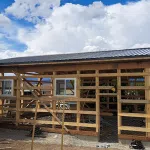
June was drier than normal in Vernon, with near average temperatures
Despite the storms seen throughout the month, June was drier than normal in Vernon.
“Vernon was a bit of an anomaly because for most of the Southern Interior — think of like Kelowna or Kamloops — they got slightly less than average precipitation. Vernon, at the climate station that we have, picked up significantly less precipitation in June,” Chris Doyle, a meteorologist with Environment Canada, told Vernon Matters.
“On record for this last June was 26.1 milimetres. On average, that station gets 59.1 mm. So less than half the normal rainfall for the month of June at the Vernon station.”
The mean temperature recorded in Vernon during the month was 16.7 degrees, which Doyle said was “basically bang on” the average of 16.6 degrees.



